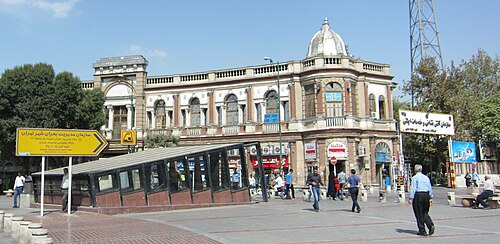Hasan Abad Metro Station ایستگاه مترو حسن آباد | |||||||||||
|---|---|---|---|---|---|---|---|---|---|---|---|
 The entrance of Hasan Abad Metro Station | |||||||||||
| General information | |||||||||||
| Location | Districts 11-12, Tehran, Tehran County Tehran Province, Iran | ||||||||||
| Coordinates | 35°41′11″N51°24′35″E / 35.68639°N 51.40972°E | ||||||||||
| System | Tehran Metro Station | ||||||||||
| Operated by | Tehran Urban and Suburban Railways Organization (Metro) | ||||||||||
| Connections |
| ||||||||||
| History | |||||||||||
| Opened | 21 February 2000 | ||||||||||
| Services | |||||||||||
| |||||||||||
| |||||||||||
Hasan Abad Metro Station is a station in Tehran Metro Line 2. [1] It is located in the junction of Imam Khomeini Street and Hafez Street in Hasanabad Square. It is located between Imam Khomeini and Imam Ali University Metro Station. [2]
